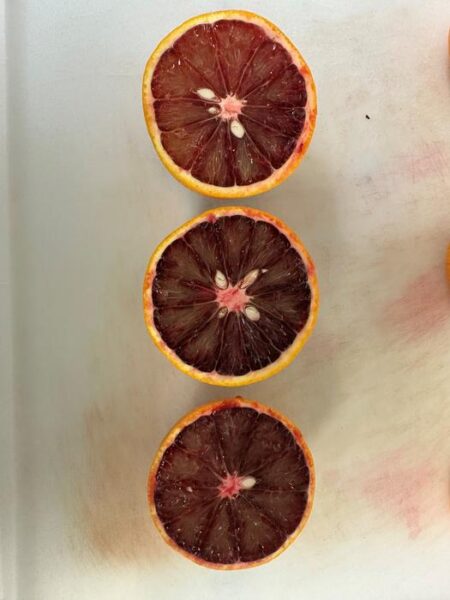Blood oranges, known for their deep red flesh and antioxidant-rich properties, may become even healthier when stored at cool temperatures, according to a new study from the University of Florida. The research suggests that this storage method could potentially benefit both consumers and citrus growers.
Increased Antioxidants and Preserved Quality
The study, led by Fariborz Habibi, a post-doctoral associate at UF/IFAS, found that storing blood oranges at temperatures between 40 and 53 degrees Fahrenheit enhances their anthocyanin, phenolic content, and antioxidant levels. When the temperatures were further lowered to 43 to 46 degrees, the fruit’s firmness, weight loss, and sugar content were also preserved.
“Attributes such as firmness are crucial for maintaining the overall quality, texture and taste of the blood oranges during storage,” said Habibi.
Blood oranges are rich in anthocyanins, which have been associated with various health benefits, including anti-inflammatory and antioxidant properties. They also contain other beneficial phytochemicals such as vitamin C, flavonoids, and dietary fiber.
Potential for Florida Citrus Industry
While blood oranges typically command higher prices than other common varieties like navel or Valencia oranges, it remains unclear whether farmers could substantially increase their per-acre income by adding them to their crop selection and then storing them for internal color development.
“Improved fruit quality from the storage method presents a promising opportunity for the Florida citrus industry. However, further study is needed before recommending anything to growers,” said Ali Sarkhosh, a UF/IFAS associate professor of horticultural sciences.
Blood oranges get their name from their deep red flesh, which is caused by a type of antioxidant pigment in their skin. The fruit is commonly grown in countries with Mediterranean climates, such as Italy and Spain, where cold temperatures above 32 degrees Fahrenheit help them grow. In the United States, blood oranges are primarily grown in California but are not yet commercially grown in Florida.
Anthocyanin development in blood oranges requires exposure to cold temperatures between 46 and 59 degrees Fahrenheit for at least 20 days, conditions that are rare in Florida’s subtropical climate.
“Fruit can also develop internal color under similar conditions at home. However, the fruit in the supermarket should have a good internal color and be ready for consumption,” Sarkhosh said.
For this research, scientists harvested fruit from a research plot at the UF/IFAS North Florida Research and Education Center in Quincy. While the study’s findings are promising, further research is needed to determine the viability of blood oranges as a crop for the Florida citrus industry.


